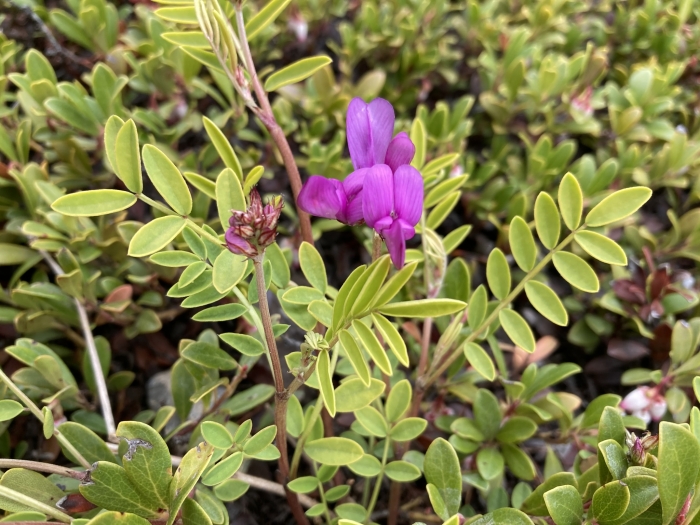Utah Sweetvetch
(Hedysarum boreale)
Utah Sweetvetch (Hedysarum boreale)
/
/

Caleb Catto
CC BY 4.0
Image By:
Caleb Catto
Recorded By:
Copyright:
CC BY 4.0
Copyright Notice:
Photo by: Caleb Catto | License Type: CC BY 4.0 | License URL: http://creativecommons.org/licenses/by/4.0/ | Rights Holder: Caleb Catto | Publisher: iNaturalist | Date Created: 2021-05-18T23:21:25Z |



















































Estimated Native Range
Summary
Hedysarum boreale, commonly known as Utah Sweetvetch, is a deciduous perennial herb native to a variety of habitats including open woodlands, grasslands, and the edges of forests in the Intermountain West of the USA, Western Canada, and Alaska. It belongs to the legume family and is recognized for its nitrogen-fixing root nodules, which contribute to soil fertility. Utah Sweetvetch typically grows from a deep taproot with a woody stem base, reaching 1 to 2 feet (0.3 to 0.6 m) in height. The plant produces an inflorescence that is a raceme of showy white, pink, or purple flowers, which are attractive to honeybees and other pollinators. Following flowering, it develops legume pods containing kidney-shaped seeds.
Utah Sweetvetch is valued for its drought tolerance and is often used in xeriscaping, as well as for roadside beautification due to its colorful blooms. It is also effective for soil stabilization. This plant thrives on well-drained loams and can adapt to clay and sandy soils, tolerating moderate salinity and a range of soil pH levels. In cultivation, it prefers full sun, requires low amounts of water, and performs best in soils with fast drainage. While not commonly found in ornamental gardens, its ecological benefits and low maintenance make it a suitable choice for naturalized areas and restoration projects.CC BY-SA 4.0
Utah Sweetvetch is valued for its drought tolerance and is often used in xeriscaping, as well as for roadside beautification due to its colorful blooms. It is also effective for soil stabilization. This plant thrives on well-drained loams and can adapt to clay and sandy soils, tolerating moderate salinity and a range of soil pH levels. In cultivation, it prefers full sun, requires low amounts of water, and performs best in soils with fast drainage. While not commonly found in ornamental gardens, its ecological benefits and low maintenance make it a suitable choice for naturalized areas and restoration projects.CC BY-SA 4.0
Plant Description
- Plant Type: Herb
- Height: 1.5-2 feet
- Width: 0.75-1 feet
- Growth Rate: Moderate
- Flower Color: Pink, Purple
- Flowering Season: Spring
- Leaf Retention: Deciduous
Growth Requirements
- Sun: Full Sun
- Water: Low
- Drainage: Medium
Common Uses
Bee Garden, Bird Garden, Butterfly Garden, Edible*Disclaimer: Easyscape's listed plant edibility is for informational use. Always verify the safety and proper identification of any plant before consumption., Fire Resistant, Low Maintenance, Showy Flowers
Natural Habitat
Open woodlands, grasslands, and forest edges
Other Names
Common Names: Utah Sweet-Vetch , Northern Sweet-Vetch , Boreal Hedysarum , Boreal Sweet-Vetch , Northern Hedysarum , Sainfoin Boréal
Scientific Names: Hedysarum boreale , Hedysarum boreale var. boreale , Hedysarum boreale var. typicum , Hedysarum canescens , Hedysarum mackenzii var. fraseri , Hedysarum mackenzii var. canescens
GBIF Accepted Name: Hedysarum boreale Nutt.